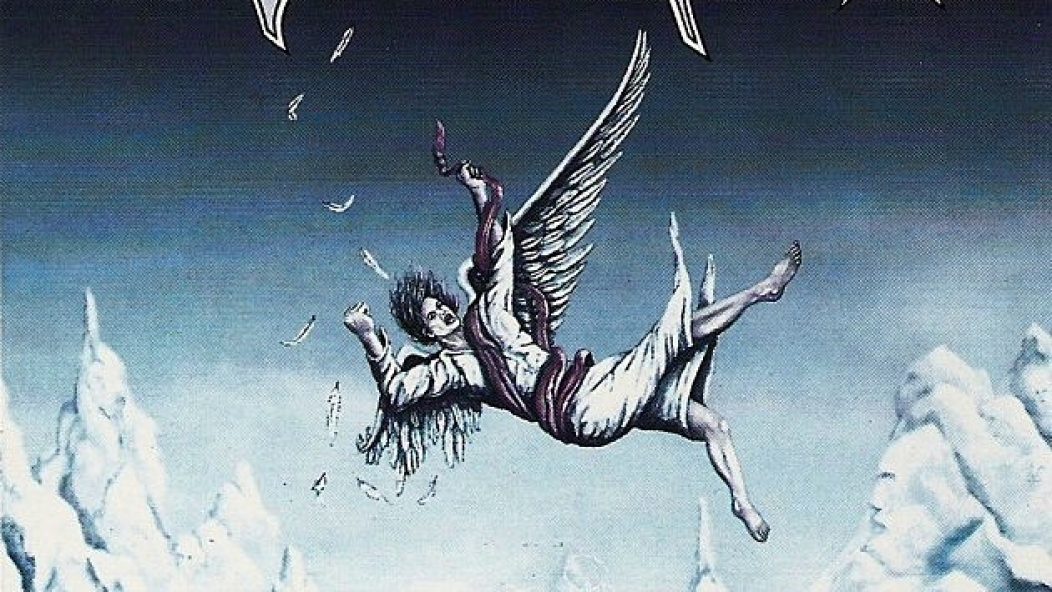
Iced Earth - Iced Earth Turns 25
…
Iced Earth, the debut album by Iced Earth, turns 25 this month. We couldn’t confirm a precise date, so we celebrate it now, at the end of November. Its true place in the band’s discography divides fans: Is it the beginning of one of power metal’s most important bands, or is it a side-step on the band’s path to success that they would find with Matt Barlow?
Gene Adam was the vocalist on Iced Earth, and he gave a less-than-stellar performance that contributes to the controversy around just how great this album actually was or wasn’t. Adam didn’t make it to the second album. He was replaced by John Greely, who would also only make it for one album. By their third album, Burnt Offerings, Iced Earth had hit its groove with Barlow. It has to be said, though, that even Barlow, who helped Iced Earth reach new heights of musical success and fame, would leave the band. In 2003, following his departure from Judas Priest, Tim “Ripper” Owens replaced Barlow, and Barlow returned once more before leaving the spot open to new singer Stu Block in 2011.
While pretty common in long-running metal bands, such a revolving door of lead singers lends strength to the argument that Iced Earth was a heavy-hitting premiere of a metal mainstay, despite the mediocre vocals. For a band that has ruled the genre of power metal for more than two decades with different singers at its helm, it didn’t matter that the albeit mightier Barlow hadn’t yet stepped in. Even with a singer that would leave fans wanting, the musicianship, the sound and the writing were already in place for Iced Earth. Vocals could be tinkered with in the future. What’s important is that the foundation for the band’s winning formula was in place.
It’s a fact that other iconic bands have proven. Iron Maiden’s first two albums are also two of the band’s most beloved, and featured Paul Di’Anno instead of Bruce Dickinson. While Dickinson has become such a fixture of the group, even the face of it, one could argue that the band might have had the same level of success with Di’Anno. Thanks to Iron Maiden’s then-revolutionary sound, it didn’t matter who was on those first two albums; they’re still the launchpad for the band’s legacy in metal.
While a similar effect played out for Iced Earth, Adam is no Di’Anno. Even if Iced Earth matters immensely as an important debut, could it ever hold the kind of place for a fan that Iron Maiden’s first two albums did for its fans?
On one hand, Iced Earth is bogged down in poor production quality and that borderline-poor performance from Adam. While a powerhouse, Adam didn’t always have the ear for pitch that Barlow had. He might have been a better match for a death metal band, where strength and brutality matter more than having a dynamic range and hitting intricate notes. Unfortunately for Adam, Iced Earth had carved out a path in a world of perfectly executed melodies.
However, Iced Earth certainly established its sound, its approach to songwriting and its intricate riffs on Iced Earth. That’s certainly due in large part to its real force already being in place: rhythm guitarist and backing vocalist Jon Schaffer. The founder of the band was the constant as far as writing every song on the album. Lead guitarist Randall Shawver often joined Schaffer, and “Written on the Walls,” a future staple of the band’s catalog, was a group effort between Schaffer, Shawver, Adam and bassist Dave Abell. Another staple and the first song on this first record, also titled “Iced Earth,” though, was all Schaffer, and that song served as the world’s first true introduction to the band. Schaffer’s other solo-writing effort, “When the Night Falls,” closes the album, bookending the record in the sound that he had created for Iced Earth.
…
…
On this album, Schaffer introduced the triplet riffs that are tightly associated with Iced Earth, for better or worse: the technique supports the band’s frenetic-yet-melodic tone, but it’s easy to see why some might feel it’s a little overused throughout the band’s songs, and therefore redundant. At this early stage, his use of triplets heightens the excitement in the music. It also works because of another key factor that gives this album points: Iced Earth was heavier and thrashier than other comparable bands. Unfortunately, some of those complexities–the would-be fine-tuned balance between melodic and thrash–can get lost in the poor production quality of Iced Earth.
Iced Earth went on to become one of the greats in metal: an outfit that respected the laws of the genre while creating its own sound, that always brought the sheer force, that developed a huge and loyal fanbase. Even though Iced Earth’s songs are dramatic and artfully composed, the band has managed to escape the cloying symptoms of less respected power metal bands, and that’s courtesy of the angry edge to its music, the notes of thrash, the authenticity.
The band would soar with Barlow at its helm and the singer became the favorite of many fans, but Iced Earth has never been one to be defined by only one vocalist. Its debut album was the first of a string of records that were instead defined by dramatic storytelling, fast-traveling guitars and acrobatic vocals, whoever was behind them. Barlow might have taken Iced Earth to a new level of fame, but the band proved they could keep up on their own, and that means their debut is as important with Adam as it might have been with Barlow. Iced Earth remains something the band’s followers are thankful for, at worst, because of what it represents, and at best because it introduced the band’s sound, Schaffer’s writing abilities and the group’s musicianship to the world.
…
…










